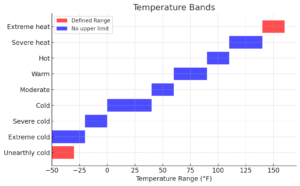
In the dark abysses of Dungeons & Dragons and other mystical role-playing realms, death lurks around every corner. Among the most treacherous and sinister dangers are the Poisonous and Noxious Gases. Born from the very bowels of the earth, these gases can be as lethal as the venomous fangs of ancient serpents.
Volcanic upheavals can unleash terrible clouds of Sulphuric gas, every whiff a death sentence. Even the rot and filth of a dungeon's waste can manifest into lethal miasmas, like methane, whose odors claw at the senses, leaving characters gasping for air.
In the hands of a cunning DM or GM, these gaseous menaces are not mere atmospheric elements. They are weapons, traps to be sprung at the most unexpected moments. Characters must be ever-vigilant, rolling saving throws vs. poison, or else fall prey to a slow, choking demise. Noxious gases demand Constitution Checks every pulse-pounding round, failure of which erodes their very essence, impairing attacks and abilities. Though it won't kill them outright, characters can be rendered pathetically helpless. Only fresh air can restore them, at the rate of three per turn.
Such toxic threats as tear gas fall into this malevolent category, but the dangers don't stop there. Gases like natural gas may be silent and unseen killers, possessing mild or no odor at all. Characters must make Wisdom Checks, sensing the unseen peril just in time, or find themselves caught unawares.
Then, there are those gases that scream danger, like Sulphur. Their stench is a warning, a chance to brace for the coming onslaught.
Natural gas, often found where coal and oil whisper their dark secrets, hides an explosive wrath. A mere torch, candle, or lantern may ignite a furious explosion with a base 20% chance per round, dealing 1d6 damage to all within the blast radius. More concentrated or different explosive gases can have their explosion chance and damage modified by the DM or GM, increasing the potency and terror.
The small, innocent creatures, such as birds, are the most vulnerable to these toxic clouds. A bird's death could serve as an eerie harbinger of doom, with secret saving throws made by the DM or GM to determine their fate.
Ventilation: A breath of salvation or a trap of doom?
Well-ventilated areas may dissipate the threat, halving the duration of gas-based spells and clearing poisonous or noxious gases quickly. But not all air is a savior. Moderately ventilated areas may conceal dangers for an hour, and completely sealed or unventilated regions may trap lethal mists for a full 24 hours.
Smoke, large fires, and the very breath of characters themselves can alter these dynamics, changing the nature of the peril and the rate of its accumulation.
Odor Detection: A final bastion of defense or a harbinger of doom?
The nose knows danger, but it is a fickle ally. The DM or GM must make Wisdom Checks for characters, and even dogs (with a Wisdom of 16) may aid in this desperate gamble. But a failed check can lead to disaster. The type of odor, its distance, and even the training of animals can play a crucial role in detecting or ignoring the lurking peril.






